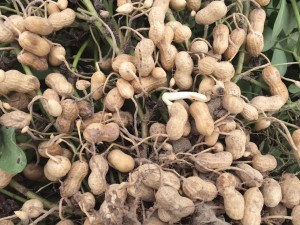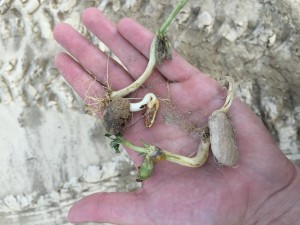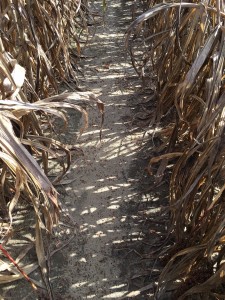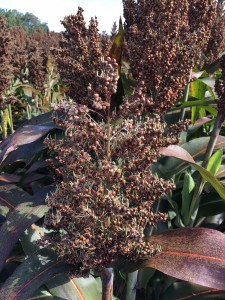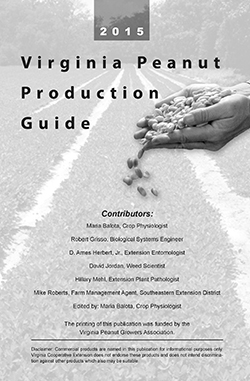In Virginia peanut digging started this year two weeks earlier than in most years, on Sep 15 in most counties. This is because of the combination of genetics, early maturing cultivars, and weather. One may say this summer was dry. Indeed, it was and some fields were more affected by drought than others. But it was a certain type of drought: cool and wet alternating with warm and dry long periods of time. For example, May was warm and dry, and suitable for early flowering; June and half of July were cooler and moist; perfect for peg and pod growth. And that was it: one huge, uniform crop set early on in the season and not two crops like we usually see in dry years. Altogether, by mid Sep the 2600 accumulated heat units were sufficient for Bailey and Sugg, the mostly grown cultivars in Virginia this year, to mature.
Over 85% of the peanuts in Virginia have been dug and in most part picked by now. Yields of those picked before Joaquin and dug after the storm are in 4,000 lb/ac yield and grades are good. Peanuts dug right prior to Joaquin are in good shape, but a lot of pod shedding occurred and this will reduce yield. The peanuts dug a week ahead of storm are in poor shape and some segregation 2 peanuts with a high content of damaged kernels was sold. No segregation 3 was yet reported. A lot of sprouting was also observed.

